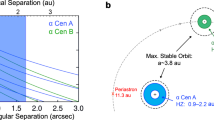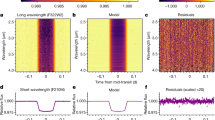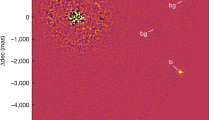Abstract
AT the Cape the faint and fast moving asteroid, Icarus, was successfully registered on plates which were taken in each of eleven observable nights from June 18 to July 12. During this period its magnitude varied from 13.8 to 18.0, the latter being the limit for the Cape instruments. On each night simultaneous exposures were made on both the Victoria 24 inch blue refractor with IIa-O baked emulsion and on the adjacent 18 inch yellow refractor with 103a-D emulsion plus a yellow filter, in order to identify Icarus with certainty from spurious images. Schedules of observation for each night were prepared in advance for the shift of the telescope at regular intervals according to the predicted motion of Icarus. The intention was to keep its image stationary on the plates to within 3 to 4 s of arc. The 8 inch guider with a movable eyepiece was used to set on off-set guide stars, selected so as to have Icarus very close to the plate centres. Division heads were fitted to the screws attached to the eyepiece so that the latter could be set to within 0.01 mm (0.3″).
This is a preview of subscription content, access via your institution
Access options
Subscribe to this journal
Receive 51 print issues and online access
$199.00 per year
only $3.90 per issue
Buy this article
- Purchase on Springer Link
- Instant access to full article PDF
Prices may be subject to local taxes which are calculated during checkout
Similar content being viewed by others
Author information
Authors and Affiliations
Rights and permissions
About this article
Cite this article
LOURENS, J. Observations of the Minor Planet 1566–Icarus. Nature 220, 251–252 (1968). https://doi.org/10.1038/220251a0
Received:
Issue Date:
DOI: https://doi.org/10.1038/220251a0
Comments
By submitting a comment you agree to abide by our Terms and Community Guidelines. If you find something abusive or that does not comply with our terms or guidelines please flag it as inappropriate.



